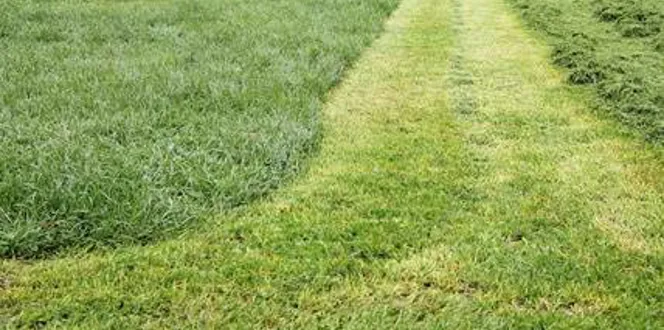If you’ve got a lawn, it needs to be mowed. Simple as that.
But did you know you can put your grass clippings to work? If you use them right, they can save you time and money while also creating a healthier lawn. Plus, it’s super easy to do!
So, if you’ve been wondering what to do with grass clippings after mowing, wonder no more! You want to compost them. Here’s how.
Grass Clippings Compost 101: The How, Why & Ways To Compost Fast
What Should I Do With Grass Clippings After Mowing?
Composting grass clippings is the best! You essentially do nothing. Honestly, it’s as simple as leaving the clippings on your lawn after mowing instead of hooking up a bag.
And doing this keeps your lawn healthier. Just check out these stats!
- Fertilize less. When grass clippings decompose, the lawn soaks up all those nutrients, like nitrogen, phosphorous and potassium. Because of this added boost, the EPA says you can skip one lawn fertilization every year. But don’t skip fall! That’s the most important time to fertilize.
- Save water. Recycling grass clippings indirectly improves soil structure, which means it can hold up to 12 percent more water, according to the University of Minnesota.
- Spend less time. You’ll save up to 35 minutes each time you mow. Over the course of the season, you’ll spend 7 hours less doing yard work, according to a Texas A& M study. Nice!
- Reduce waste. Did you know yard trimmings make up nearly 20 percent of our solid waste? You’ll feel good recycling and reusing instead of trashing your grass.
Plus, if you’ve heard that leaving grass clippings leads to thatch, recent studies have shown that’s usually not true. So, recycle your grass with confidence. Or if you want to bag and compost your grass clippings, that works, too!
Learn How To Compost Grass Clippings & DIY It.
To compost grass clippings directly in the yard:
- Plan to mow dry grass with a sharp blade, and never remove more than one-third of the grass height at once.
- Mow grass to its ideal height, which is 3 inches for cool-season grasses and 2 inches for warm season grasses. If you experience a traditional cold winter, you probably have cool season grass!
- During peak season, mow every five days, instead of every seven. Even though you’ll do this more, you’ll spend up to 38 percent less time during each mow, according to the University of Idaho. So, overall, this works in your favor!
- Leave the grass clippings on the yard. That’s it! But if you see the clippings collecting in piles, rake ‘em out, so they can decompose quicker.
To compost grass clippings traditionally in a pile or bin:
- Attach a mower bag to catch grass clippings.
- Add dry grass that hasn’t been treated in the last 14 days to your compost pile.
- For the correct 30:1 carbon-to-nitrogen ratio, mix about 50% grass clippings and 50% brown material, like brown leaves, branches or newspaper.
How Long Does It Take For Grass Clippings To Decompose?
If you allow grass to decompose on your lawn, it’ll be gone soon, usually within a few weeks. If you compost grass in a pile and turn regularly, it’ll turn into compost in a few months.
How Can I Compost Grass Clippings Fast?
To compost grass in the yard quicker, mow every five days! If you’re composting grass in a pile, get the ratio right, turn your pile weekly and water when dry.





